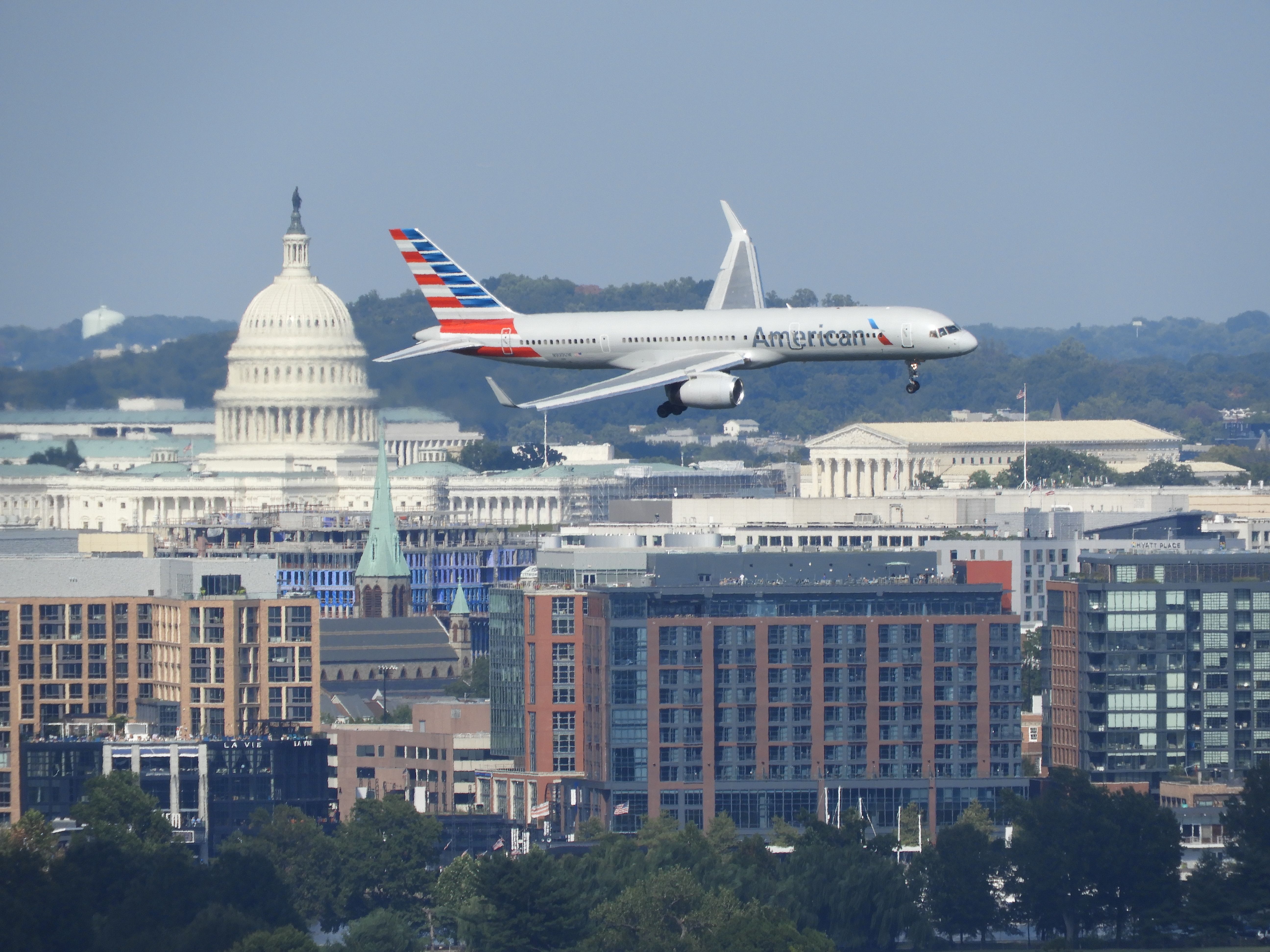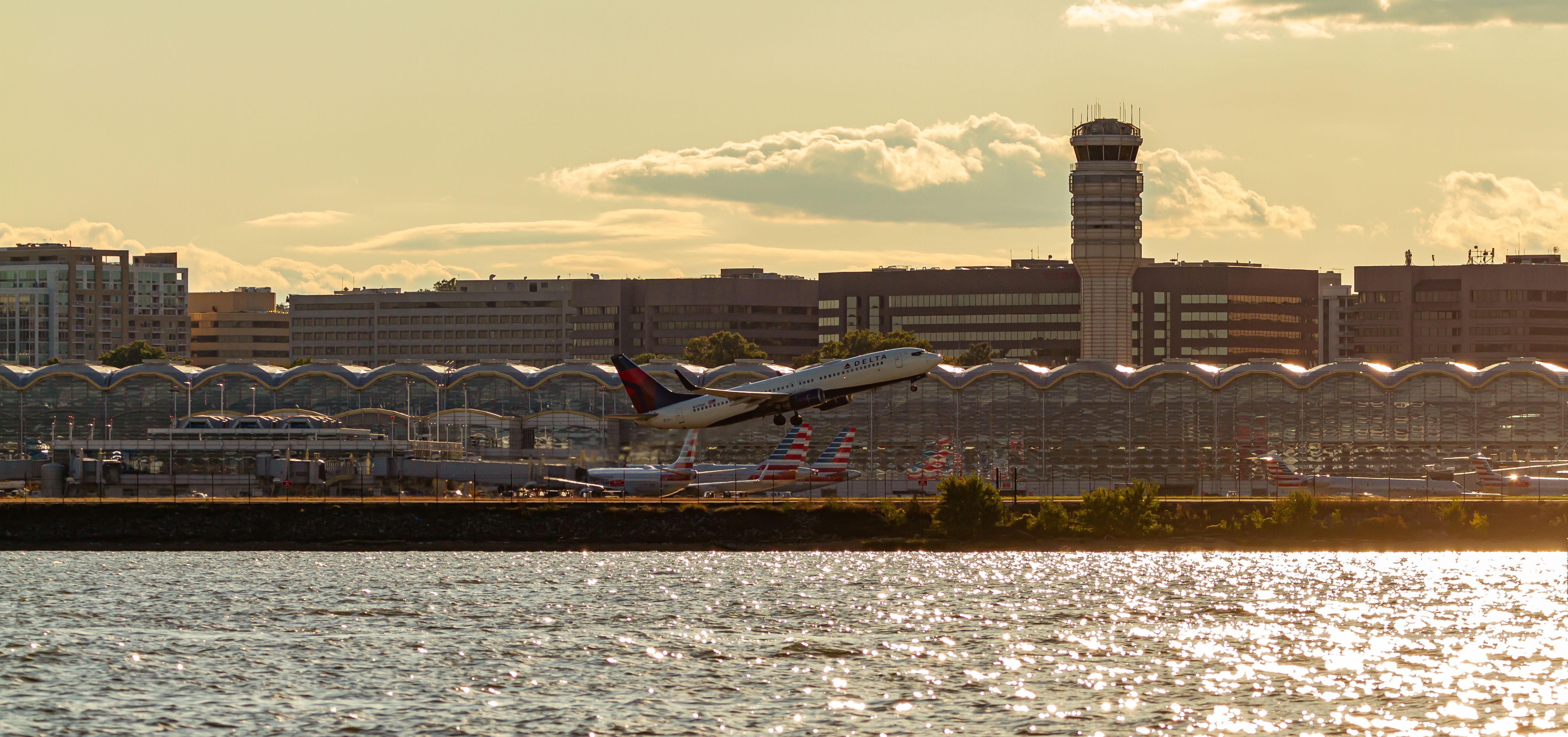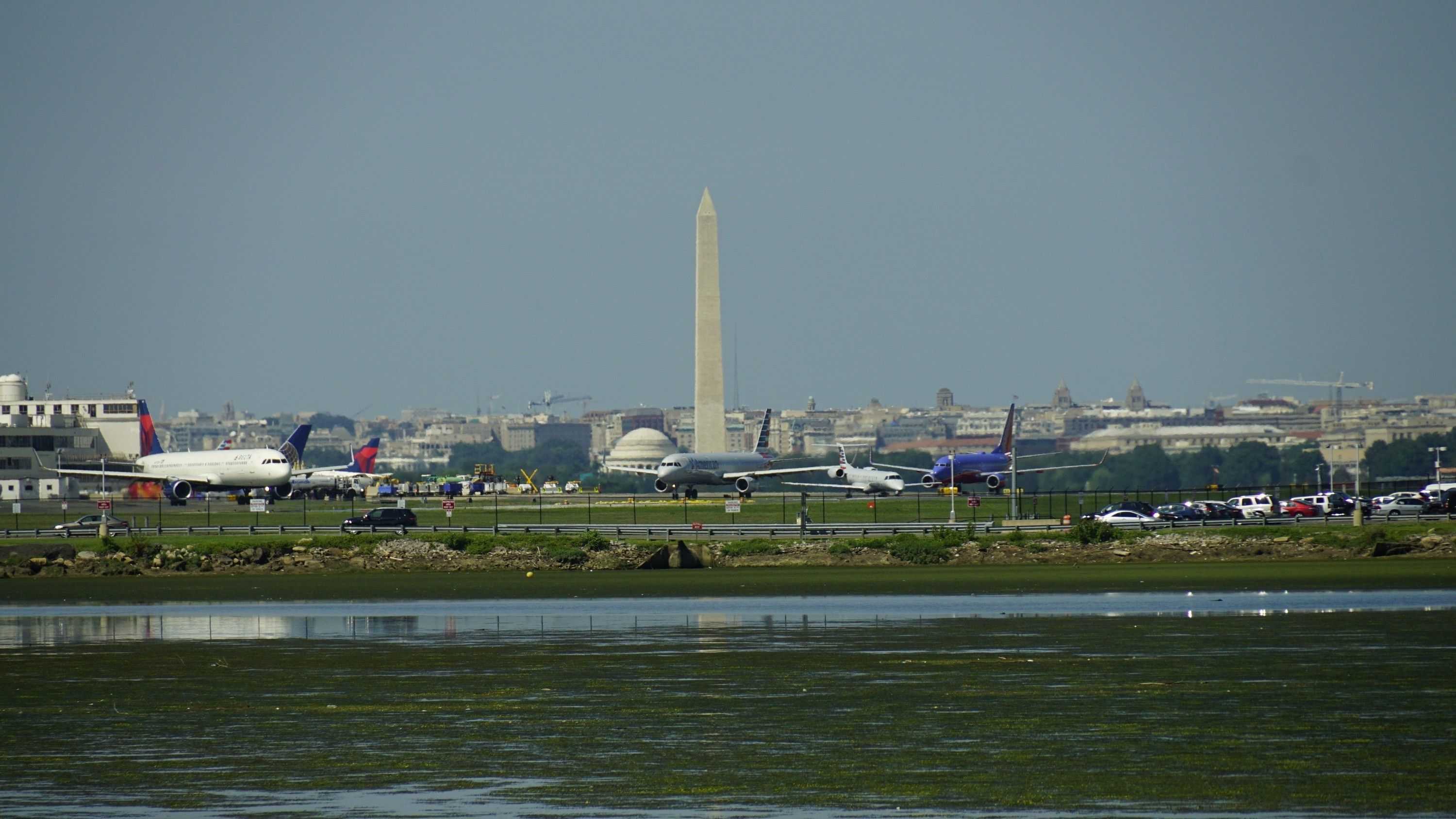Summary
- The River Visual approach to Reagan Washington National Airport offers breathtaking views of iconic landmarks.
- Departing Runway 1 at DCA requires an immediate left turn to avoid prohibited airspace.
- Reagan National Airport is constrained by its location near the Potomac River and urban area.
- DCA’s perimeter limitations also restrict flights to certain distances.
Flying into Washington, DC, on a clear day is one of the true pleasures of flying for the airlines in North America. The metropolitan Washington area is served by three major airports: Washington Dulles, Baltimore/Washington International, and Reagan Washington National Airport. While the first two are like any other class B airport in the US, Reagan National is remarkable for its proximity to the Capitol and the operational requirements this proximity dictates. Low turns during takeoff and landing, restricted airspace, short runways, congested ramps and taxiways, and arguably the most unique approach in the entire US are features of Washington, DC’s most accessible airport. Here are some of the many things that make DCA a special place to fly.
The “River Visual”
Identified by many airline pilots as the most captivating approach in the US, the River Visual approach to DCA’s runway 19 provides passengers and pilots with breathtaking aerial views of the US Capitol, Washington Monument, National Mall, and the Lincoln Memorial (among other landmarks). The River Visual is only available on days when the winds are out of the south and the weather is good enough for VFR flying. Pilots are meant to visually fly over the Potomac River for the last four miles of the approach to runway 19 when cleared for the River Visual.
The River Visual’s design is meant to keep aircraft out of the most well-known prohibited airspace in the country: Prohibited Areas P-56A and B overlaying the Naval Observatory, National Mall, and White House. Flying through this airspace, intentionally or inadvertently, comes with harsher consequences than most other regulatory violations. Pilots know that tracking directly over the middle of the Potomac will keep them outside restricted airspace, which is why the River Visual procedure was conceived.
Photo: MichaelSchoenDC I Shutterstock
The approach has suggested altitudes and distances charted to help pilots hand-fly a stabilized approach to runway 19. The orientation of the Potomac River leaves pilots about 30 degrees off the centerline of runway 19. Pilots make a final turn around 200 feet above the ground after crossing the George Mason Bridge to line up with the runway. This is unique to airline flying; almost everywhere else, no turns are made below 1,000 feet. The River Visual is a unique challenge but one that every pilot enjoys.
Departing Runway 1
A northern or calm wind day sees DCA operate a “north flow” using Runway 1 as the primary pavement for takeoffs and landings. Approaching Runway 1 has a noise abatement procedure over the Potomac (the Mt. Vernon Visual) during visual conditions. Unique though it may be, it is nowhere near as spectacular or challenging as the approach to Runway 19. The challenge of the north flow lies off the departure end of Runway 1, where the Prohibited Areas exist.
Runway 1 departures from DCA all feature an immediate left turn after takeoff to avoid flying into the prohibited areas. Pilots aren’t allowed to exceed 220 knots until after turning so that the turn radius doesn’t take them into the restricted areas. Interestingly, the FAA created a five-letter RNAV waypoint named PLVIA that pilots can input into their navigation computers to depict a radius around the P-56. This ensures that pilots have enhanced situational awareness regarding the airspace, which would be particularly helpful in the event of an engine failure on takeoff.
Photo: grandbrothers I Shutterstock
Nearly every airport devoid of terrain off the departure end has a standard procedure for pilots to follow in the event of an engine failure on takeoff: Fly the runway heading, reach a safe altitude, retract the flaps, accelerate, and turn as required. The prohibited airspace in Washington requires pilots to turn after takeoff, even in the event of an engine failure. Pilots who lose an engine off Runway 1 need to begin turning within the first half mile of the departure end to remain clear of P-56. Even in the event of an emergency, P-56 is still off-limits. Due to the tight operational restrictions at DCA, you’ll never see emergency diversions or returns to the airport. Instead, pilots go to Dulles or Baltimore.
Tight ramps, congested taxiways
Reagan National is constrained by the Potomac to the north, east, and south and the urban Crystal City to the west. Consequently, the airport footprint has not expanded much since the late 1950s. Only two arterial taxiways run in north/south orientations, constrained by the runways to the east and terminals to the west. Reagan National, like LaGaurdia, can become highly congested during weather events, deicing, or busy operating hours.
Photo: ceid I Shutterstock
Ground controllers have limited options for creating space at the airport. Planes sometimes have to hold in the ramp area for many minutes after pushback to allow for taxiways to clear. Even after reaching the main taxiways, pilots are often sent to the tight holding bays (similar to runup areas at GA airports) to wait their turn to depart. Unless departing runway 15, pilots must cross at least one runway due to the airport’s orientation, which requires extra radio work and vigilance by pilots and controllers
Perimeter limitations
The last unique feature to discuss is the long-debated perimeter limitations imposed on flights arriving and departing from DCA. Flights originating or arriving at DCA could not serve airports beyond 650 nautical miles in the 1960s. The perimeter, first introduced in 1966, corresponds to the opening of Dulles a few years prior. After spending federal dollars to build and operate the new airport, regulators wanted to ensure Dulles handled most of the air traffic (especially international operations) to and from the Capitol. This perimeter has been expanded multiple times in the last 55 years. The current perimeter is 1,250 nautical miles, allowing for flights to cities as far as Houston and Dallas.
The current federal perimeter allows for a certain number of daily exemptions to the 1,250-mile rule. These airline-specific exemptions enable carriers to operate a limited number of daily flights to cities beyond the normal radius. Destinations outside the perimeter include Seattle, Los Angeles, and Phoenix.
A gem in the heart of the Capitol
These are just a few features that make Ronald Reagan Washington National Airport unique. The airport is a gem in the heart of the US Capitol, providing easy access to the city’s political, educational, and financial districts. The views from easterly-facing plane windows are stunning, the approaches and departures are challenging, and operating on the ground at DCA takes keen attention to detail. Most pilots enjoy flying into DCA, especially on clear days when the wind is from the south.




